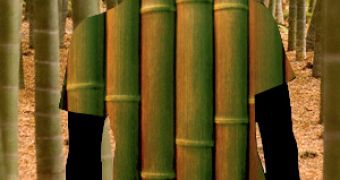You rather associate bamboo with exotic furniture, but the textiles of the future could be bamboo-made. A new research carried out at the Colorado State University and presented at the 235th national meeting of the American Chemical Society shows that bamboo textiles protect against harmful ultraviolet (UV) radiation, having anti-bacterial properties.
Bamboo clothing is already common in Japan, China, India and other Asian countries, being soft, durable and elastic, resembling silk with an extra attractive sheen. This plant is sought after as an ecological product because, amongst other factors, it has the fastest growing rhythm of all woody plants, maturing in 3-4 years, compared to 25 to 70 years for tree species on commercial plantations.
"Bamboo is environmentally friendly. Pesticides and other agents are necessary to grow most other natural fibers - there is nothing like that in bamboo production. But despite bamboo's promise as an environmentally friendly fiber, untreated bamboo fabric has plenty of room for improvement," said co-author Dr. Subhash Appidi.
Untreated bamboo fabric allows almost all harmful UV radiation to reach the skin and has weak antimicrobial qualities.
"All cellulose fibers allow more moisture to leak in and provide more food for bacteria to eat. That's why bacteria grow more on natural fibers rather than synthetic fibers," said Appidi.
Bacterial blooms in the clothing make it smelly and unhealthy. By treating it with Tinosan, the team increased the antibacterial properties of bamboo fabric by 75-80%.
The anti UV protective qualities of the fabric were enhanced by coloring pieces of a commercially available type in a dye containing UV absorbing chemicals, at an optimal concentration. The "ultraviolet protection factor" (UPF) of over 50 is considered safe against UV radiation; the treated bamboo fabric reached 56.
Now the team is looking for antibacterial agents that could decrease the bacteria number by 99%. The effect of multiple laundry cycles also must be further investigated, but preliminary results point that the UV and microbial factors stay there after washing.
The research is aimed to be a first step towards turning bamboo fabric as common in US as in Asian countries.

 14 DAY TRIAL //
14 DAY TRIAL //